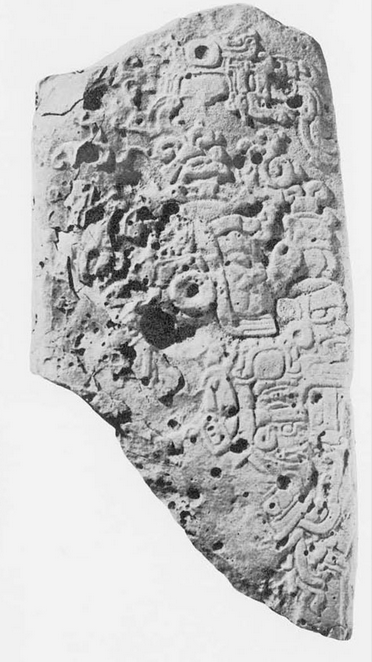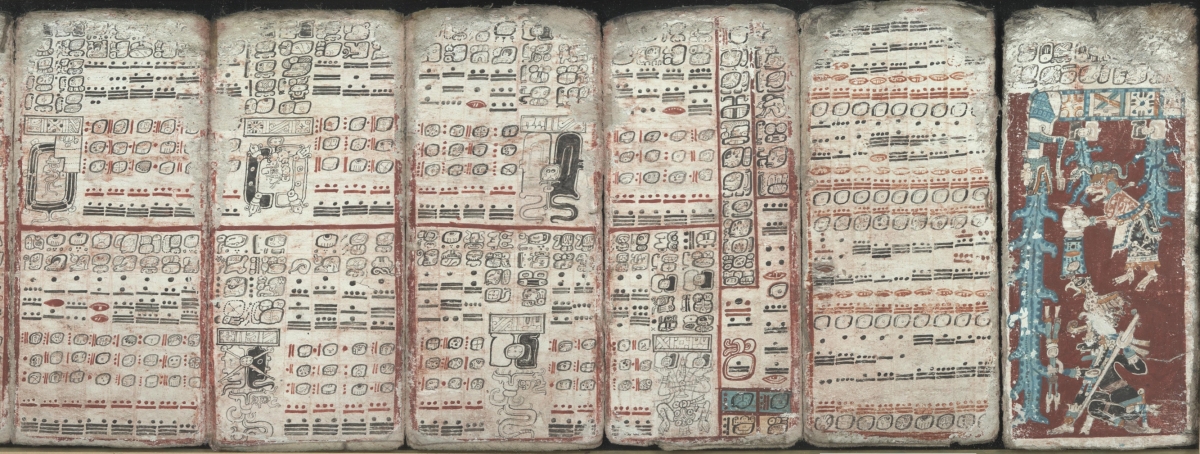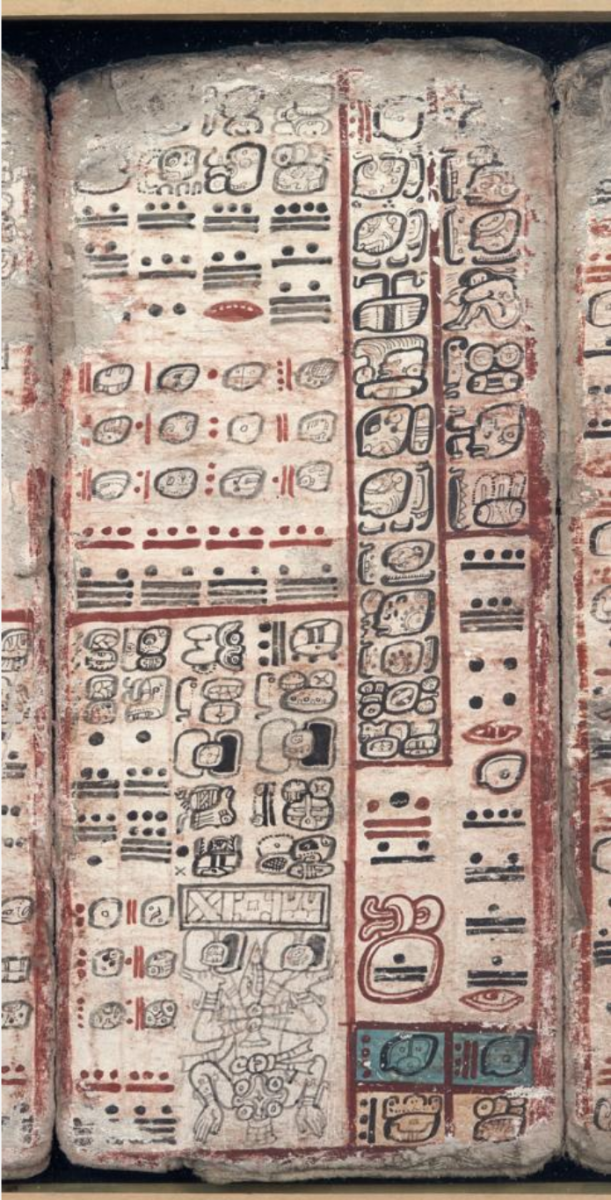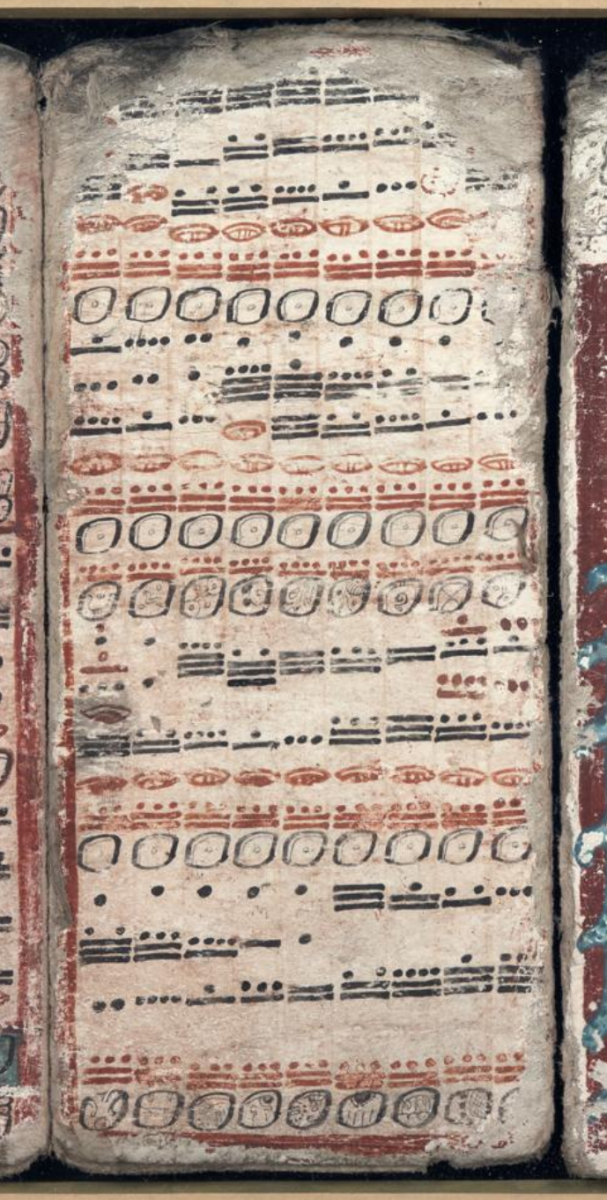- About MAA
- Membership
- MAA Publications
- Periodicals
- Blogs
- MAA Book Series
- MAA Press (an imprint of the AMS)
- MAA Notes
- MAA Reviews
- Mathematical Communication
- Information for Libraries
- Author Resources
- Advertise with MAA
- Meetings
- Competitions
- Programs
- Communities
- MAA Sections
- SIGMAA
- MAA Connect
- Students
- MAA Awards
- Awards Booklets
- Writing Awards
- Teaching Awards
- Service Awards
- Research Awards
- Lecture Awards
- Putnam Competition Individual and Team Winners
- D. E. Shaw Group AMC 8 Awards & Certificates
- Maryam Mirzakhani AMC 10 A Awards & Certificates
- Two Sigma AMC 10 B Awards & Certificates
- Jane Street AMC 12 A Awards & Certificates
- Akamai AMC 12 B Awards & Certificates
- High School Teachers
- News
You are here
Maya Cycles of Time: The Long Count
The Maya developed the practice of using time periods even longer than the 18,980-day Calendar Round believed to have been invented originally by the Olmec. For the Maya, the basic unit of time, a day, was called a kin. In the second order, 20 kins made up a uinal. In a vigesimal system the third order would be 20 uinals but, instead, 18 uinals made up a tun. Thus a tun was 360 kin (days). Time keeping units then returned to factors of 20 moving up to each successive level. In this way the Maya recorded references to vast spans of time in their effort to tie current events to their past history and folklore.
The table below shows the five levels used to record significant dates in the Maya Classic Era (200–900 CE).

The Maya are often credited as the first people to establish a chronological record of dates beginning with a fixed day in the distant past from which to number each day uniquely. They identified the beginning of recorded time as the date when they believed the world last came to an end and was recreated anew. They believed this occurred at the close of a Great Cycle of 13 baktuns (1,872,000 Kins). Thus their “chronological count,” called the Long Count, is really another cycle, this one of 5,128 years. The end of the current Great Cycle is approaching soon, due on the Winter Solstice, December 21, 2012. (Editors’ note: We remind readers that this article was published in 2007, when 2012 was still in the future.)
Mayanists recognize that early Mesoamerican astronomers may have created the Long Count by targeting this particular end date. It is a date that has special meaning in Maya cosmology and, perhaps not coincidently, is also related to the movement of equinoxes relative to other heavenly bodies. After all, the precession of the equinoxes was known to many ancient Old World cultures, including the Egyptians and Greeks. In 2012 there will be a unique conjunction of the Winter Solstice sun with the crossing point of the Galactic Equator and the ecliptic.
A Mayan date begins with a Long Count, which consists of number and time period symbols arranged vertically in carvings called stelae and in books called codices. Figure 5 shows Tikal Stela 29, which records the Long Count date
8 baktun 12 katun 14 tun 15 uinal 0 kin.
Mayanists write this date as 8.12.14.15.0 using a shorthand notation called the Goodman notation. The date probably corresponds to July 8, 292 CE.

Figure 5. Tikal Stela 29 records the Long Count date 8.12.14.15.0. Penn Museum.
The beginning of the current Great Cycle was written not as 0.0.0.0.0, but rather as
13.0.0.0.0 4 Ahau 8 Cumku.
See this date on the sketch of Quirigua Stela C in Figure 6.

Figure 6. Sketch of Quirigua Stela C. Wikimedia Commons.
The 13 in this date refers to the number of baktuns and each successive 0 refers to katun, tun, uinal and kin values, respectively. The Ahau and Cumku numbers correspond to the Tzolkin and Haab dates.

Figure 7. Sheets 55–59, 74 of the Dresden Codex. Wikimedia Commons.
During the Classic period the Maya placed their lunar series glyphs between those of the Tzolkin and Haab dates, demonstrating a clear grasp of the moon’s changing appearance in the sky. They found that 4,400 days equaled 149 moons, corresponding to a lunation value of 29.53020 days. In the Dresden Codex they laid out the number of days between 405 consecutive lunations, cleverly interpolating lengths of 29 and 30 so that the actual discrepancy in the appearance of a new moon was no more than one day.


Figure 8. Pages from the Dresden Codex showing the Long Count. Library of Congress.
Returning to the Maya computation of the length of a solar year and the significance of 1,101,600 days, the Maya observed that in the year 7.13.0.0.0, Midwinter Day, or the Winter Solstice, occurred on 0 Yaxkin for the second time since the recreation of the world in year 13.0.0.0.0. This is 1,101,600 days after the beginning of the current Long Count, which, again, they denoted as 13.0.0.0.0 or 13 baktuns and which probably occurred in Gregorian year 3114 BCE.
Sandra Monteferrante (Dowling College), "Maya Cycles of Time: The Long Count," Convergence (July 2012), DOI:10.4169/loci003886




